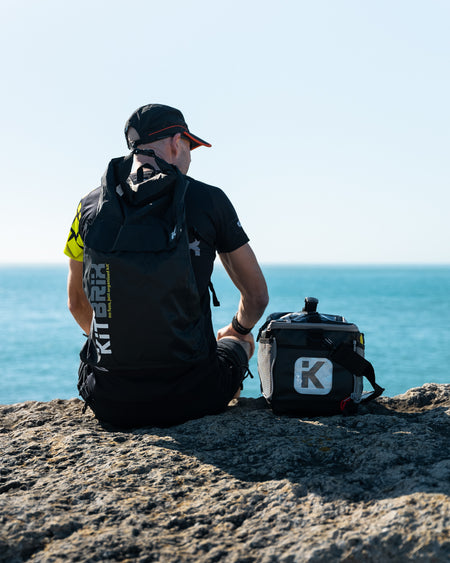
What distance is a triathlon?
The beautiful thing about triathlons is that they come in a range of distances. Whether you are a beginner looking for your first taste of triathlon running or an expert seeking the next big challenge, triathlon racing can be for everyone. The shortest official triathlon distance is the Super Sprint Triathlon which involves a 400m swim, 10km cycle and a 2.5km run. On the other end of the spectrum there is the Ironman which involves a staggering 3.8km swim, 180.2km cycle and a 42.2km run. For more information you can read our blog ‘How Long is a Triathlon?’ here.
What do you wear for a triathlon?
The equipment you use when competing in a triathlon can make all the difference on where you finish. The equipment you bring on race day can also mean the difference between being allowed to compete and disqualification. Certain items are essential, such as a bike helmet, bike, running shoes and a swimming gear. You can also bring with you additional extras like a Kitbrix bag, microfibre towel, sunglasses and triathlon suit.

What do you eat before a triathlon?
Taking on a triathlon is quite a feat, with some triathlons covering up to 226km. This means the fuel you put into your body can make or break your race time and performance. If you do not fuel your body with the correct foods, this can even result in a DNF against your race number (did not finish). It is advised to eat a meal approximately 2-3 hours before the beginning of the race. This allows your body enough time to digest before competing without getting hungry again. An ideal breakfast would include healthy fats, carbohydrates and protein. Porridge, almonds, eggs, fresh fruit and peanut butter are good options. For more information of what to eat before, during and after a triathlon, you can read our blog here.
How do you train for a triathlon?
If you are just starting out in triathlons, it might be worth joining a triathlon club or hiring a 1-2-1 triathlon coach. These can set you on the right path, teach you a few training tips and set you up with a training schedule. An alternative is the internet. You can use our https://www.kitbrixusa.com/blogs/news for the latest information and enlist the help of other websites with triathlon expertise.

What is the difference between an Ironman and a triathlon?
One of the most frequent questions we get at Kitbrix is “what is the difference between an Ironman and a triathlon?”. The quick answer is… every Ironman is a triathlon, but not every triathlon is an Ironman. Ironman is a trademarked name that hosts the ‘Half Ironman’ (1.9km swim, 90km cycle, 21.1km run) and the ‘Ironman’ (3.8km swim, 180.2km cycle, 42.2km run) races. Triathlons come in the shorter distances such as the Super Sprint Triathlon, Sprint Triathlon and Olympic or Standard Triathlon. You can learn more about the differences in length, training and recovery between competing in our Ironman vs Triathlon blog here.
How long does it take to recover from a triathlon?
Recovering from a triathlon varies greatly from person to person. Some triathletes can recover within 7 days of crossing the finish line, whilst others take double that. The three main factors that influence this is the length of the race, your level of fitness and experience, and how well you paced yourself on race day. For example, if you were to compete in an Ironman Triathlon, it may take up to 3 months to fully bounce back. The most important thing you can do is listen to your body and only return to normal training once you have fully recovered. Resuming training or competing in another endurance race too soon can lead to injury and prolonged recovery. If you would like to learn about recovery times for each triathlon distance, you can read our blog ‘Triathlon Post-Race Recovery Time’ here.
Still hungry for more? You can read our other FAQ blogs here…
‘Swimming for Triathlon: Your Essential Questions Answered’
'Cycling for Triathlon: Your Essential Questions Answered'







